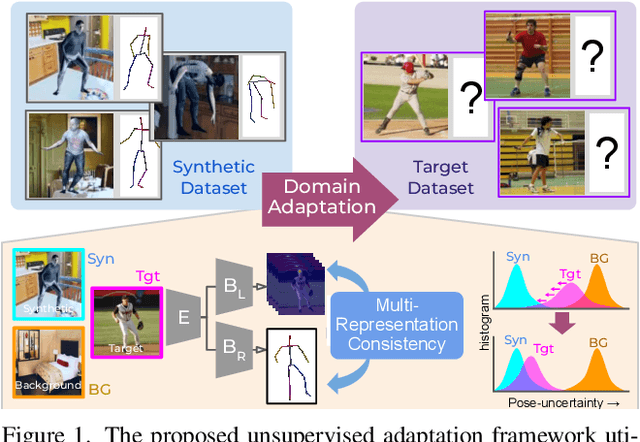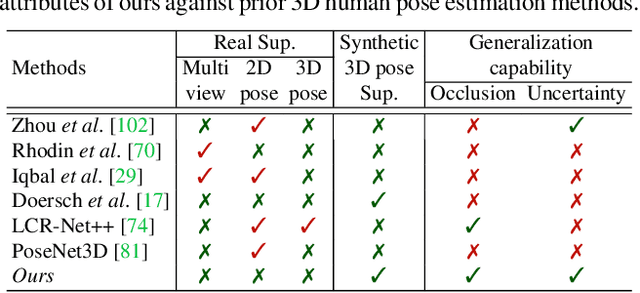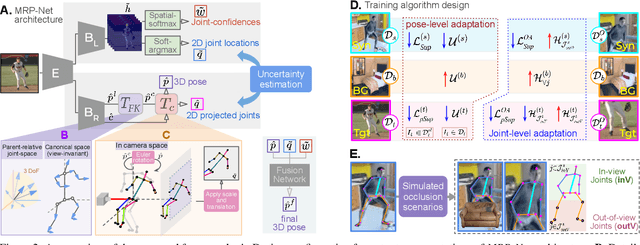Uncertainty-Aware Adaptation for Self-Supervised 3D Human Pose Estimation
Paper and Code
Mar 29, 2022



The advances in monocular 3D human pose estimation are dominated by supervised techniques that require large-scale 2D/3D pose annotations. Such methods often behave erratically in the absence of any provision to discard unfamiliar out-of-distribution data. To this end, we cast the 3D human pose learning as an unsupervised domain adaptation problem. We introduce MRP-Net that constitutes a common deep network backbone with two output heads subscribing to two diverse configurations; a) model-free joint localization and b) model-based parametric regression. Such a design allows us to derive suitable measures to quantify prediction uncertainty at both pose and joint level granularity. While supervising only on labeled synthetic samples, the adaptation process aims to minimize the uncertainty for the unlabeled target images while maximizing the same for an extreme out-of-distribution dataset (backgrounds). Alongside synthetic-to-real 3D pose adaptation, the joint-uncertainties allow expanding the adaptation to work on in-the-wild images even in the presence of occlusion and truncation scenarios. We present a comprehensive evaluation of the proposed approach and demonstrate state-of-the-art performance on benchmark datasets.
 Add to Chrome
Add to Chrome Add to Firefox
Add to Firefox Add to Edge
Add to Edge